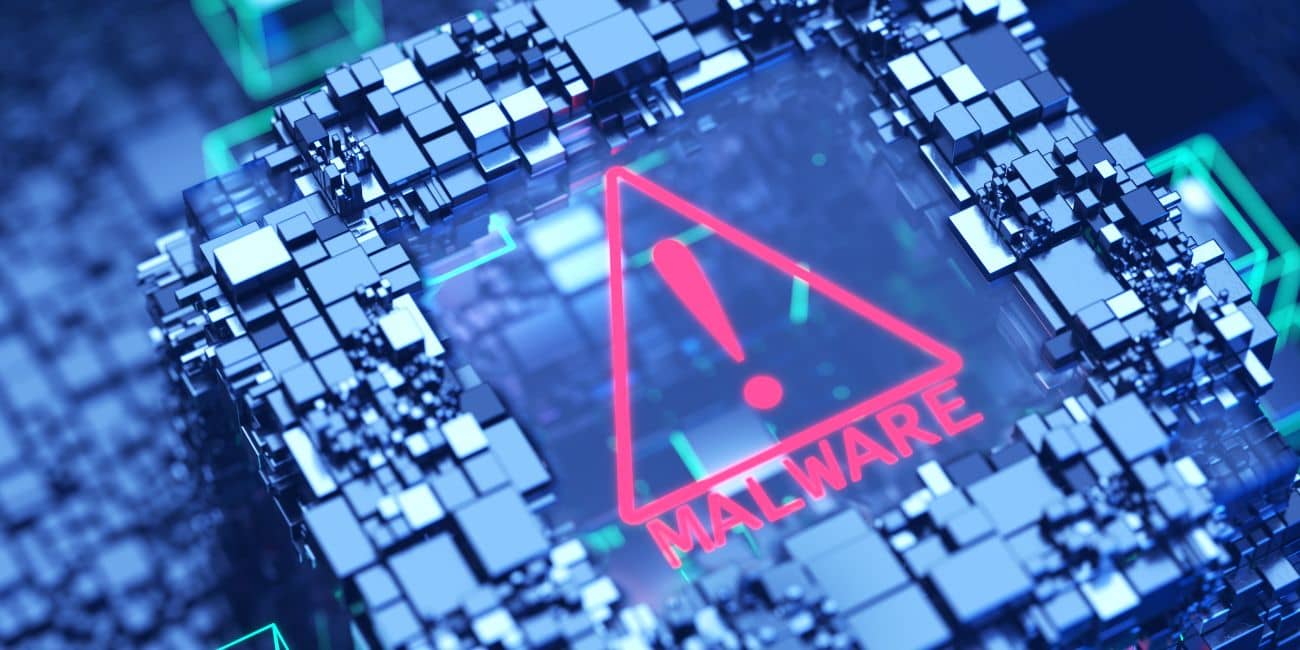Malware, a contraction of “malicious software,” is a term of much dread and does not fail to evoke feelings of anxiety in the computing world, and with good reason. The purpose of these covert programs is to infiltrate, disrupt, and compromise a computer system, usually with malicious intent. This has been a long time coming, and as tech evolved, so too did malware, becoming more widespread and vicious. Consequently, understanding the nature of malware attacks is essential for effective cybersecurity measures, as these attacks pose significant threats to both individuals and organizations.
In the 21st century, the world has seen an overwhelming commonness of malware attacks with radical motives. In 2023, malware was involved in 40% of data breaches, a 30% increase from 2022. AV-Test identified more than 100 million strains of malware and potentially unwelcome applications (PUA). Additionally, 81% of organizations faced threats from malware, phishing attacks, and password breaches.
Among the others, ransomware has especially developed into a major concern. Sixty percent of small businesses that fell victim to data breaches had to close permanently. There is no stronger example proving the dire necessity for both robust cybersecurity and protection against the abuse of privacy on a global scale.
Throughout this malware attacks history series, we will explore the evolution of malware – a cat-and-mouse game between cybercriminals and defenders. However, secure yourselves, because we are going to explore the nooks and corners of cyberspace, where lines of code form the rules, and awareness is the key to preparing ourselves against the Almighty Malware.
An Overview of the Malware Attacks in History
Shai-Hulud Worm in npm Packages (2025)
Description:
Shai-Hulud emerged as a self-replicating worm hidden in npm packages. Unlike isolated trojans, it combined credential theft, automated exfiltration, and rapid propagation. It created GitHub repos named “Shai-Hulud,” exfiltrated secrets, and republished infected versions across hundreds of packages in hours.
Impact:
The attack disrupted the npm ecosystem at scale. Developers and CI/CD pipelines pulling public packages were at immediate risk of credential leaks, cloud account compromise, and persistent GitHub workflow tampering. The blast radius grew quickly as more packages became infected.
Lesson:
Shai-Hulud revealed how fragile modern pipelines are. Every dependency install must be treated as code execution. Organizations need automated scanning, lockfile enforcement, and strict token management to contain risks before they spread.
Complexity:
The worm used obfuscation, large Webpack-bundled payloads, and dynamic code execution to evade detection. Its propagation was efficient, turning one stolen token into hundreds of compromised packages. This level of automation elevated it from a simple malware sample to a large-scale supply chain worm.
Lapsus$ Ransomware (2022)
Description:
Lapsus$ highlighted the importance of robust cybersecurity practices. Therefore, regular backups, network segmentation, and employee training are critical to prevent and mitigate ransomware attacks. Moreover, organizations should never rely solely on paying ransoms as a solution.
Impact:
Lapsus$ caused widespread panic and financial losses. Organizations faced the dilemma of paying the ransom or risking exposure of confidential data. Some victims complied, while others chose to rebuild their systems from scratch.
Lesson:
Lapsus$ highlighted the importance of robust cybersecurity practices. Therefore, regular backups, network segmentation, and employee training are critical to prevent and mitigate ransomware attacks. Moreover, organizations should never rely solely on paying ransoms as a solution.
Complexity:
Lapsus$ proved advanced techniques, including polymorphic code, evasion tactics, and efficient propagation. Its creators remained elusive, leaving cybersecurity experts puzzled about their identity and motives.
DarkSide Ransomware as a Service (RaaS) 2020
Description:
DarkSide emerged in August 2020 as a significant player in the ransomware landscape. Operating as a Ransomware-as-a-Service (RaaS), DarkSide provides its malicious software to affiliates who execute the attacks.
Impact:
The DarkSide group gained notoriety for orchestrating the ransomware attack on Colonial Pipeline in May 2021. Consequently, this critical infrastructure attack forced the company to proactively shut down its 5,500-mile pipeline, which supplies 45 percent of the fuel used on the East Coast of the United States.
Lesson:
The Colonial Pipeline incident showed the need for robust cybersecurity measures. Organizations must defend against ransomware by implementing preventive strategies, such as regular backups, network segmentation, and employee training. Additionally, having an incident response plan is crucial to mitigate the impact of such attacks.
Complexity:
DarkSide operates as a service, sharing extortion profits between the RaaS owners and their affiliates. Each affiliate negotiates ransom terms with victims and deploys the ransomware using its intrusion methods. The FBI strongly discourages paying ransoms, as it perpetuates further attacks and encourages criminal activity.
The Conti Ransomware Attack (2019)
Description:
The Conti ransomware attack is a notable incident in the realm of cyber threats. Specifically, it emerged as a highly effective and damaging form of malware, impacting organizations worldwide.
Impact:
Conti ransomware has caused significant financial losses and operational disruptions for targeted entities. Notably, it encrypts critical files and demands a ransom payment in exchange for decryption keys. Therefore, organizations that fall victim to Conti face difficult decisions: pay the ransom or risk permanent data loss.
Lesson:
The Conti attack highlights the importance of robust cybersecurity practices. Organizations must prioritize preventive measures, such as regular backups, network segmentation, and employee training. Additionally, having an incident response plan in place can reduce the impact of ransomware attacks.
Complexity:
Conti exhibits sophistication, using advanced encryption techniques and evading detection mechanisms. Its development likely involves well-funded criminal groups or state-sponsored actors. Therefore, protecting against Conti requires vigilance and collaboration across sectors.
WannaCry Ransomware Attack (2017)
Description:
WannaCry, also known as WannaCrypt, was a ransomware attack that wreaked havoc worldwide in May 2017. Specifically, this malware exploited a vulnerability in Microsoft Windows operating systems, particularly targeting older versions that had not been updated with the necessary patches.
Impact:
WannaCry affected over 200,000 computers across 150 countries, disrupting hospitals, businesses, and government agencies. Consequently, the attackers demanded Bitcoin ransoms for decryption keys to unlock the infected systems.
Lesson:
Timely patching and updates are critical. Organizations must prioritize security patches to prevent vulnerabilities from being exploited. Regularly updating software helps protect against known vulnerabilities.
Legacy:
The WannaCry attack showed the critical importance of timely security updates and robust cybersecurity practices. It also highlighted the potential widespread impact of ransomware attacks on essential services and infrastructure.
NotPetya Malware Attack (2017)
Description:
Initially believed to be a variant of the Petya ransomware, NotPetya was later identified as a destructive wiper masquerading as ransomware. This malware primarily targeted Ukraine but caused significant global damage.
Impact:
NotPetya caused severe losses on major companies like Maersk and Merck. Unlike typical ransomware, the primary motive behind NotPetya appeared to be destruction rather than financial gain.
Lesson:
Cyberattacks can have accidental global consequences. Even if an attack initially targets a specific region, it can quickly spread and impact organizations worldwide. Robust cybersecurity measures are essential for all businesses.
Significance:
NotPetya showed the potential impact of cyberattacks on critical infrastructure and global supply chains, emphasizing the need for comprehensive cybersecurity measures across all sectors.
Stuxnet Malware Attack(2010)
Description:
Stuxnet was a innovative worm designed to undermine Iran’s nuclear program. Specifically, it targeted industrial control systems (ICS) used in uranium improvement processes.
Impact:
Stuxnet caused physical damage to centrifuges at Iran’s Natanz nuclear facility, marking a significant moment in cyber warfare. Consequently, it shown that digital attacks could lead to physical damage.
Lesson:
Cyber warfare is real. Stuxnet shown that digital attacks can cause physical damage. Critical infrastructure, industrial control systems, and nuclear facilities must be secured against such threats.
Complexity:
Stuxnet was highly sophisticated, using multiple zero-day vulnerabilities and employing stealthy propagation techniques. Moreover, its development involved significant resources, indicating state-level involvement.
ILOVEYOU (2000)
Description:
ILOVEYOU was a worm that spread via email and file-sharing networks, starting in the Philippines. Notably, it disguised as a love letter attachment, exploiting users’ trust.
Impact:
The ILOVEYOU worm caused billions of dollars in damages by overwriting files and growing rapidly. Consequently, it highlighted the vulnerability of email systems and the importance of user awareness in cybersecurity.
Lesson:
User awareness matters. For instance, ILOVEYOU spreads through email attachments, exploiting users’ trust. Therefore, teaching users about safe email practices and suspicious attachments is crucial.
Conficker (2008)
Description:
Conficker was a worm that exploited vulnerabilities in Microsoft Windows, creating one of the largest known botnets by November 2008.
Impact:
Conficker compromised millions of computers, demonstrating the critical need for timely patching and robust network security measures.
Lesson:
Neglecting security updates can lead to disaster. Specifically, Conficker thrived on unpatched systems. Therefore, organizations must prioritize security hygiene, including regular patch management.
Persistence:
Despite efforts to contain it, Conficker continued to evolve and infect systems, noting the ongoing challenge of combating steady and adaptable malware.
Conclusion
Like a two-edged sword, these scary malware attacks are serious examples of how the cyber landscape constantly changes. It reinforces the need for strong security, patching, and user education to defend against the risks of malware. But our message is simple: You must remain watchful and be prepared to do good cybersecurity.
How Xygeni’s Open Source Security Solution Protects You from Malware Attacks
As we’ve seen, cyber threats are constantly evolving, getting smarter and more challenging to detect. Open source software, which we all rely on, has become a key target for attackers trying to sneak malware into the software supply chain. This is where Xygeni’s Open Source Security Solution comes in, offering the protection you need.
Stay Ahead with Continuous Monitoring
Think about how many of those infamous malware attacks could have been stopped with early detection. Xygeni’s solution keeps a close watch on open source components, scanning major public registries like NPM, Maven, and PyPI in real-time. This proactive approach catches and blocks malicious packages before they have a chance to cause trouble.
Catching Hidden Threats with Advanced Detection
Let’s face it: traditional security tools often miss zero-day malware. That’s why Xygeni uses advanced behavioral analysis to spot these hidden threats. By looking at how the code behaves, Xygeni can detect and neutralize sophisticated malware that other solutions might overlook. The result? Your software stays safe from even the newest threats.
Focusing on What Matters Most
It’s not enough just to detect threats—you need to know which ones to tackle first. Xygeni helps you do that by prioritizing vulnerabilities based on how severe they are, how likely they are to be exploited, and their potential impact on your business. This way, your security team can focus on what matters and stop small issues from turning into big problems.
Integrating Seamlessly with Your Workflow
In today’s fast-paced development world, you need security that works with you, not against you. Xygeni’s solution integrates smoothly into your existing CI/CD pipelines, providing automated scans and real-time alerts without slowing you down. This means your defense against malware is always on, always vigilant, and always ready to respond.
Ready to protect your software from modern threats? Learn more about Xygeni’s Open Source Security Solution and start securing your applications today!

